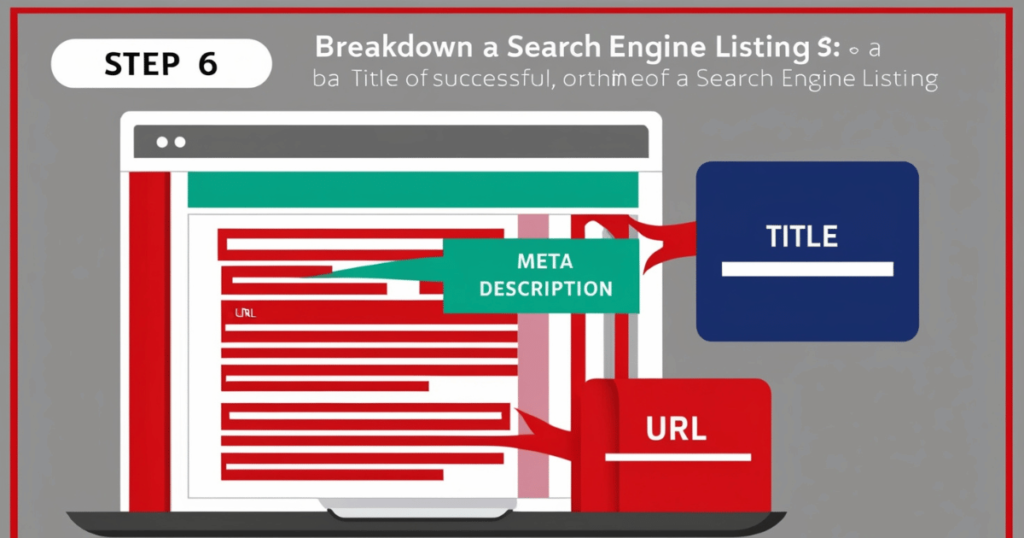
Optimizing your website’s search engine listing is crucial for achieving top rankings in search engine results pages (SERPs). If you want your content to appear on page one of Google Discover, focusing on improving your search engine listing is non-negotiable. This comprehensive guide will provide you with expert tips, advanced strategies, and proven techniques to help you rank higher in search engine listings.
What is a Search Engine Listing?
A search engine listing is the representation of your webpage in search engine results. It typically includes three main elements:
- Title Tag: The clickable headline in search results.
- Meta Description: A brief snippet summarizing the content.
- URL/Slug: The web address displayed below the title.
These components form your search engine listing, which acts as a gateway for users to access your content.
Importance of Search Engine Listing Optimization
Optimizing your search engine listings is vital because it directly influences:
- Click-Through Rate (CTR): A well-crafted listing increases the likelihood of users clicking on your link.
- Search Engine Ranking: Proper optimization helps search engines understand your content, boosting your ranking potential.
- User Experience: Clear, informative listings reduce bounce rates by matching user expectations.
By focusing on your search engine listing, you can significantly improve your site’s visibility and traffic.
Step-by-Step Guide to Optimize Search Engine Listing
Step 1: Conduct Thorough Keyword Research

Start by identifying the best keywords related to your niche. Utilize tools like Google Keyword Planner, SEMrush, or Ahrefs to find keywords with high search volume and low competition. Incorporate these keywords naturally into your search engine listing elements.
Step 2: Write an Engaging Title Tag
Your title tag should be between 50-60 characters and include your primary keyword. The title should be compelling, informative, and keyword-rich. Here’s how to craft an optimized title:
Example:
- Poor Title: “Learn About Listings”
- Optimized Title: “Boost Your Traffic with Search Engine Listing Tips”
Step 3: Craft a Concise Meta Description
The meta description should be 150-160 characters long and contain your focus keyword. Include a strong call-to-action (CTA) to encourage users to click. Here’s an optimized example:
Example:
- Poor Meta Description: “Check our site for listings.”
- Optimized Meta Description: “Optimize your search engine listing for better visibility. Learn how to rank higher and attract more traffic today!”
Step 4: Optimize the URL/Slug
Keep the URL short, descriptive, and keyword-focused. It should accurately reflect the page content while using hyphens to separate words.
Example:
- Poor URL:
website.com/page12345 - Optimized URL:
website.com/search-engine-listing
Step 5: Analyze Competitor Listings
Look at the top-ranking pages for your target keyword. Analyze their search engine’s listing, paying close attention to their title tags, meta descriptions, and URLs. Identify patterns or elements that you can improve upon.
Tips for Analysis:
- Note the length of their title tags and meta descriptions.
- Observe the use of CTAs and keywords.
- Check for unique selling points (USPs) that make their listings stand out.
Step 6: Use Structured Data

Implement structured data (schema markup) on your page to enhance your search engine’s listing. Structured data helps search engines understand your content better and can result in rich snippets, which are more attractive to users.
Example of Schema Markup:
Step 7: Monitor and Adjust Your Listings
Use tools like Google Search Console and Google Analytics to track the performance of your optimized listings. Monitor metrics such as CTR, impressions, and ranking positions. Make adjustments to your title tags, meta descriptions, and URLs as needed.
Common Mistakes to Avoid in Search Engine Listing
- Overloading with Keywords: Keyword stuffing can harm your rankings and make your listing appear spammy.
- Duplicate Metadata: Avoid using the same title tag and meta description for multiple pages.
- Ignoring Mobile Preview: Ensure your listing looks good on both desktop and mobile devices.
Advanced Tips for Search Engine Listing Success
Use A/B Testing
Experiment with different versions of your search engine listings to find the most effective combination of title tags and meta descriptions. Use A/B testing tools like Google Optimize to compare performance.
Leverage Emotional Triggers
Incorporate power words and emotional triggers in your title tag and meta description to captivate users. Words like “exclusive,” “free,” “new,” and “proven” can increase your CTR.
Keep Your Listings Updated
Regularly update your search engine listing to reflect changes in your content and target keywords. This practice helps maintain relevancy and improves your chances of ranking higher.
FAQs on Search Engine Listing
Q1: What is the ideal length for a title tag in search engine listings?
The ideal length is between 50-60 characters to ensure it is not truncated in search results.
Q2: Can I edit the search engine listings for any page on my website?
Yes, most CMS platforms, including Shopify and WordPress, allow you to edit title tags, meta descriptions, and URLs for individual pages.
Q3: Why is structured data important for search engine’s listings?
Structured data helps search engines understand the content of your page better and can lead to rich snippets, enhancing your listing’s visibility.
Q4: How often should I update my search engine’s listing?
We recommend updating your listings every few months or when there are significant changes in content or target keywords.
Conclusion
Optimizing your search engine listings is an essential part of your SEO strategy. By focusing on keyword research, crafting compelling title tags, writing concise meta descriptions, and using structured data, you can significantly improve your visibility and CTR in search engine results. Regular monitoring and adjustments are crucial to maintain high rankings and ensure your listings remain relevant and effective.



